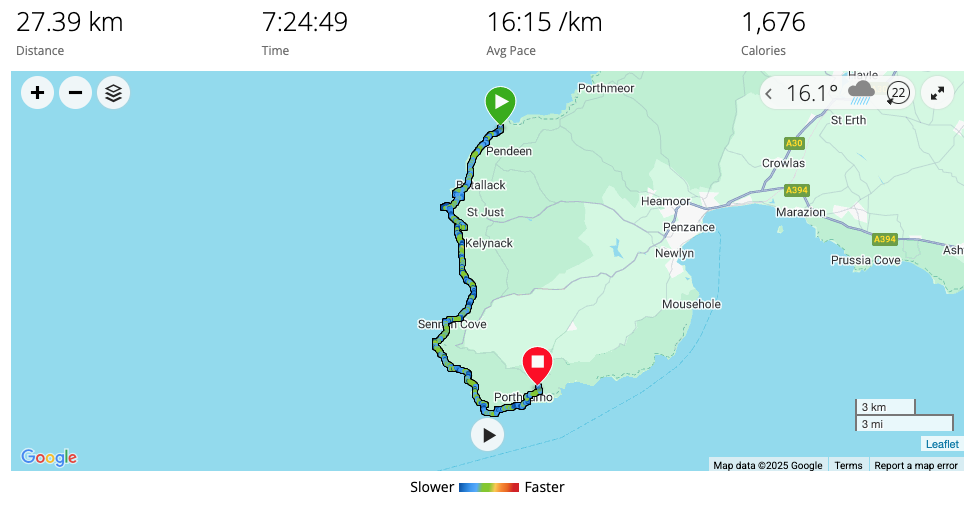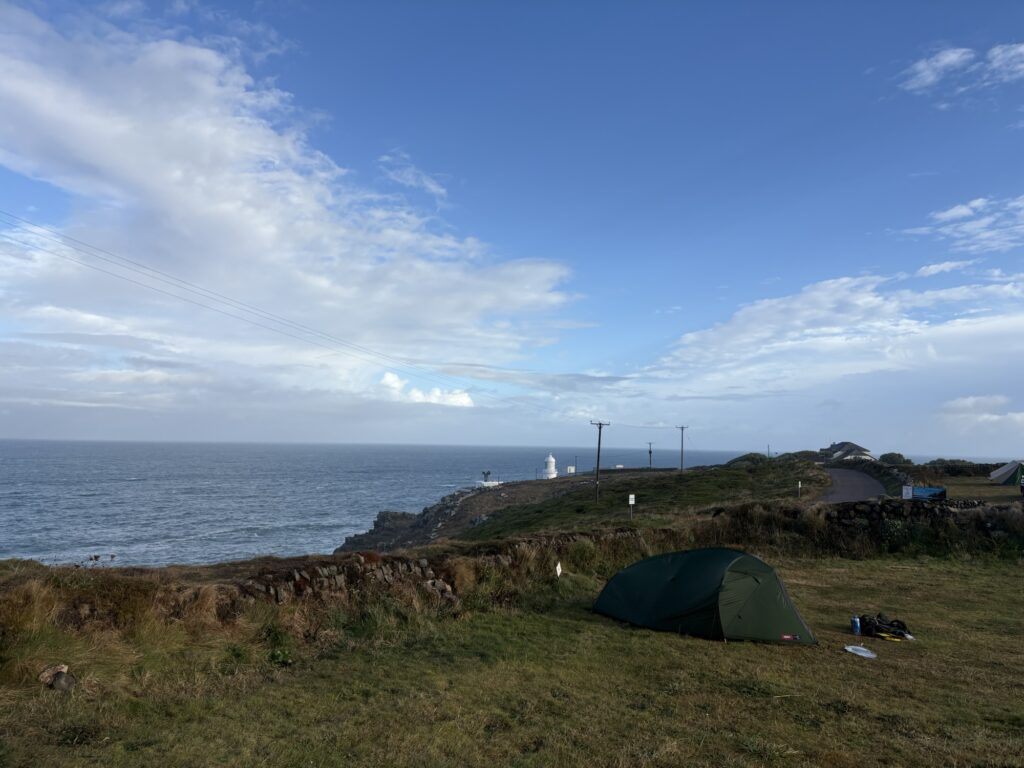
We were awoken by a thunderstorm crashing around us while camped on top of Pendeen Watch, high above the sea. The tent set a new wind speed survival record as the squall intensified and battered us side on. White flashes of light were almost immediately followed by enthusiastically long rolls of thunder that rumbled around us. The sea joined in and we could hear the surf landing heavily on the sandy bay. The tent was fully guyed out in preparation, which was good because I was really not going out there. At its peak there was a crack and my hand pushed back at the central pole above us but nothing seemed to have failed. The wind stopped gusting, eventually slowed, and the rain ended as suddenly as it had started. I brewed two cups of tea to warm us up. The sun came out and tried to act like nothing had happened.
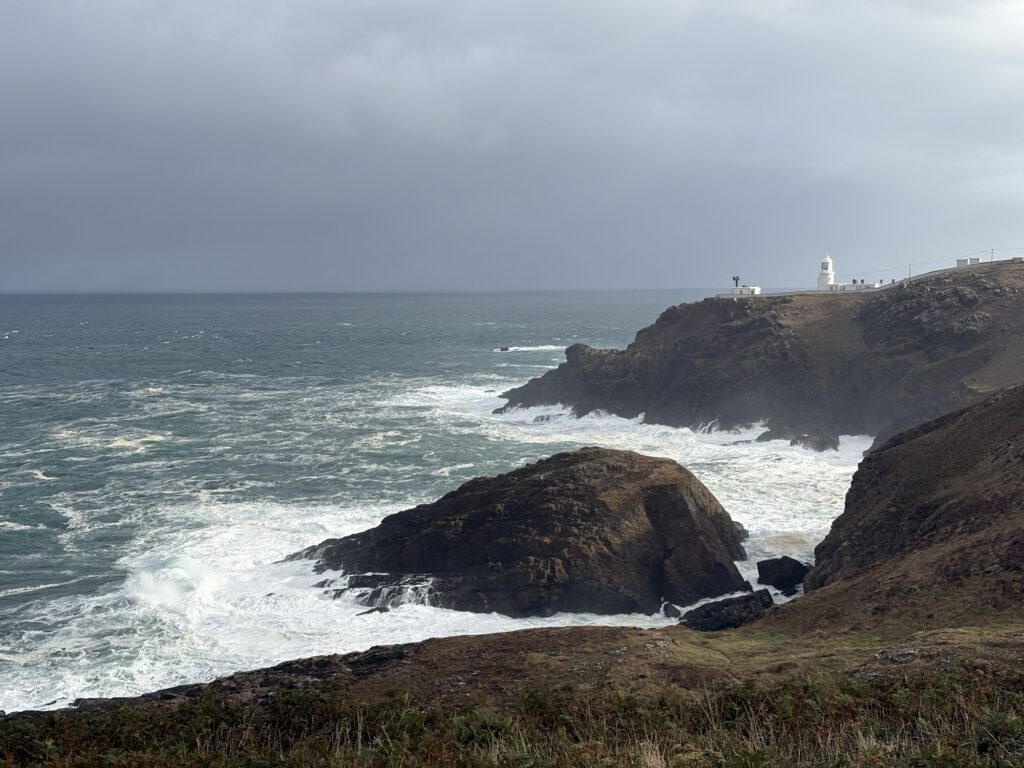
We were packed up and off at the usual time of around 8.30am, fully fleeced and waterproofed (but still in shorts) to fend off the showers and chilly start. The path took us straight into the Cornish mining heritage coast, past tin mine after tin mine, old engine houses, hoists, and buildings sat for over 150 years in unlikely positions way down on rocky platforms next to the sea.
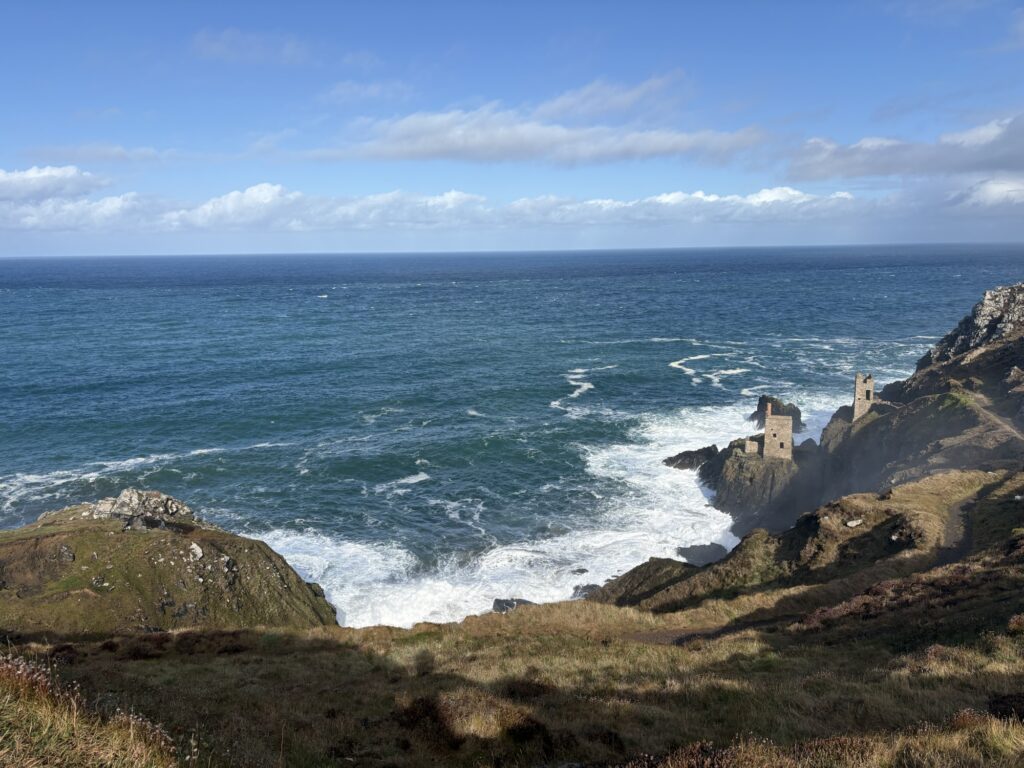
The swell was still running from the storm in the Atlantic, but bursting on the rocks with a little less energy than yesterday. Between the coast itself and the industrial legacy upon and inside it we were entertained for the first couple of hours of walking on easy paths.
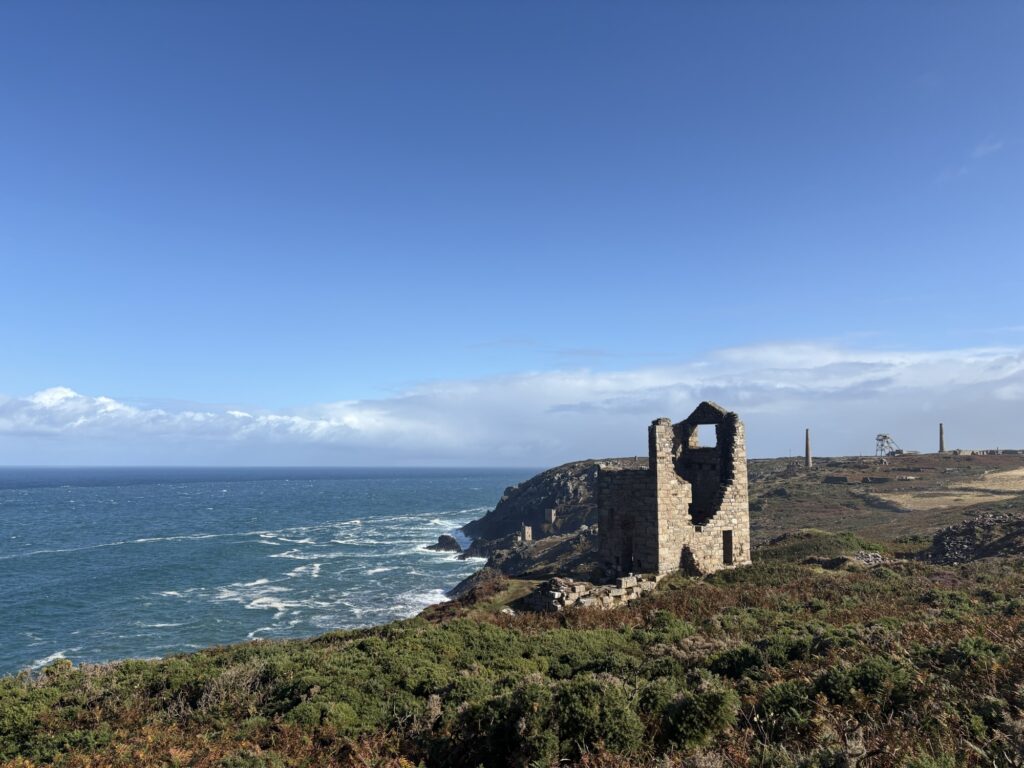
At Cape Cornwall there was a small cafe serving coffee in vintage Queen’s jubilee (various jubilees) mugs and selling most excellent fat sausage rolls. Other walkers appeared in the National Trust car park. Kim found donkeys.

Continuing onwards and necessarily upwards the path took us to overgrown mineshafts and adits beckoning into the hillside. Kim had little explores but did not go in. There be drops inside. The rock was largely the granite peculiar to this area, as at the famous ridge of Bosigran. Solid and rough, pillars and walls appear as blocks separated by deep cracks. Mining through this stuff cannot have been easy.

We could see Longships rocks and their warning lighthouse out at sea from Cape Cornwall. Famously found at Land’s End this showed us where we were going.
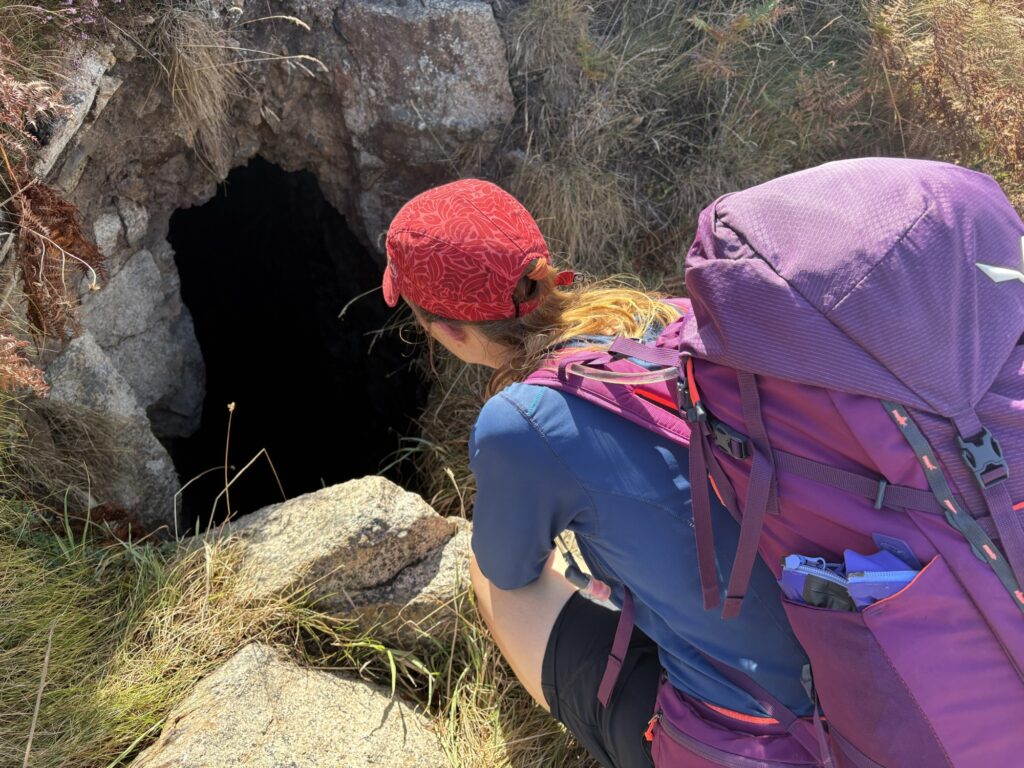
Mid-way up the hillside we worked our way across granite rocks and boulders towards Sennen Cove. Down through small dunes, past an adder breeding habitat and on to the beach we worked our way across to the slipway. The beaches are much quieter after the bank holiday weekend. We stopped at the surf centre for cold drinks and found a shop on the way through to fill rucksacks with chocolate and biscuits. We did not stop long as Land’s End was around the corner.
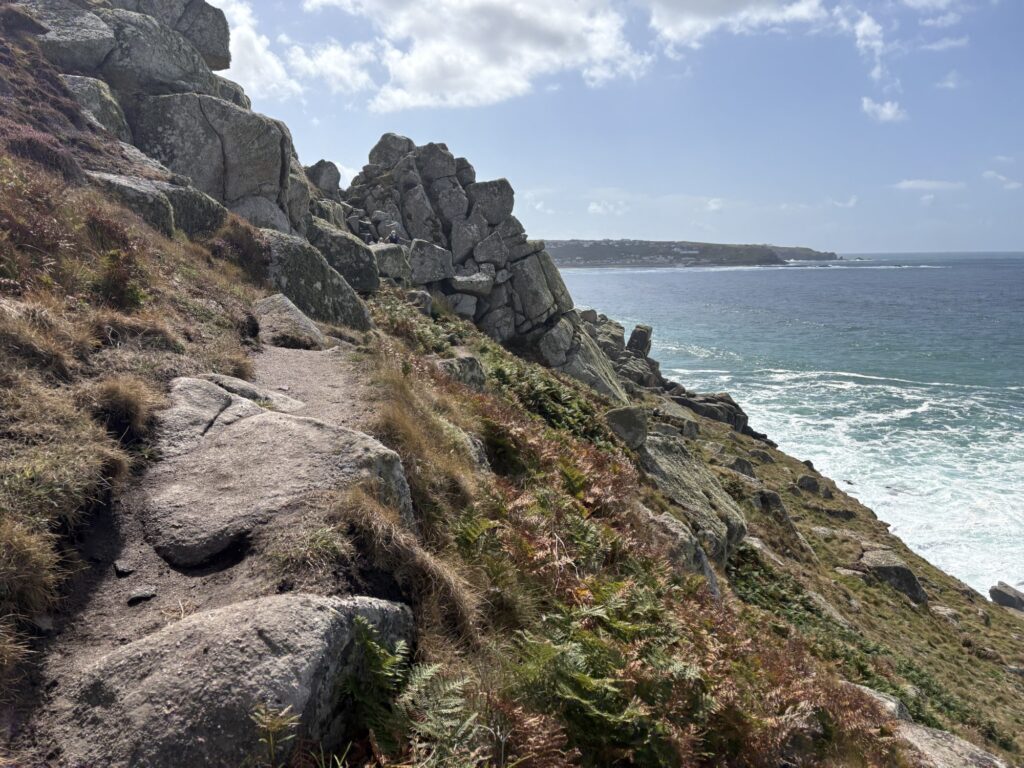
Climbing out of Sennen Cove we could see the hordes. Excited to reach a major landmark and to have walked all the way from Minehead to Land’s End, we hurried along amongst all the people that had merely driven there in their motorised armchairs. At mid-afternoon it was not as busy as it could have been, and we passed the long line of people queuing to have their photos taken with the Land’s End signpost. We stood outside the cordon while a family posed and congratulated ourselves. It really did feel good to have walked here. We truly had not known whether we would succeed or fail. So many little things can go wrong to stop you, particularly when your time is limited. The restaurant had stopped serving food so we had coffee, a piece of lemon meringue and a piece of strawberry cheesecake.
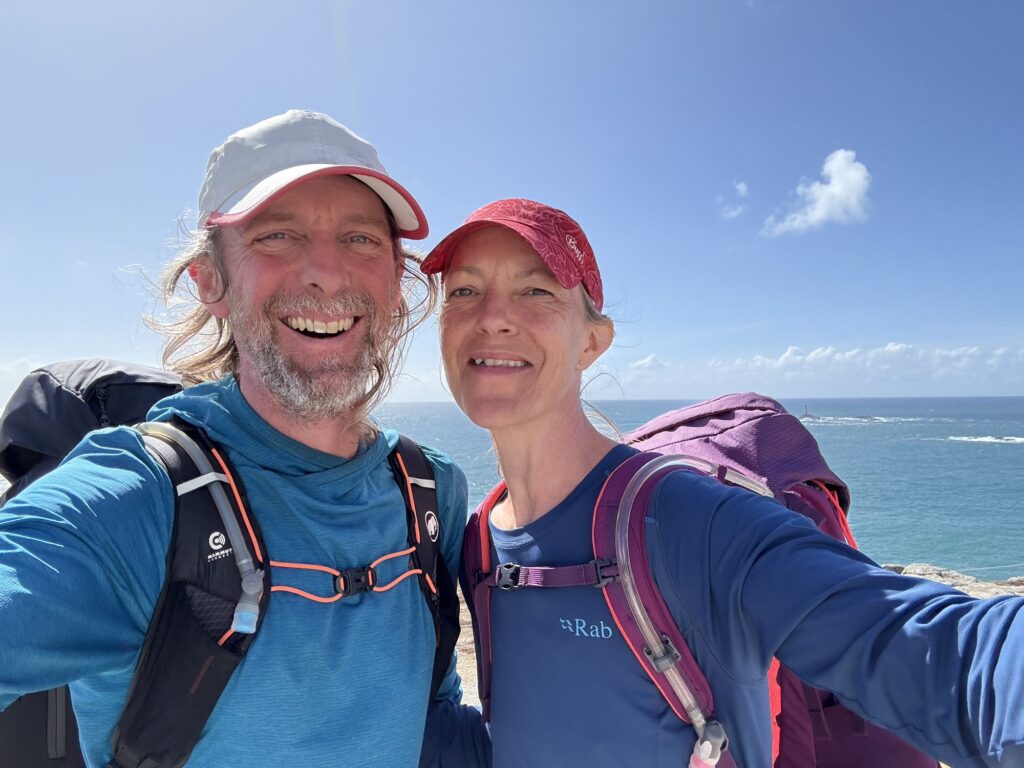
Ever onwards we scratched our heads studying the map and trying to work out how to get out and where the coast path had gone. There is a small zoo and craft centre to keep visitors entertained by more than just mere geography and it was out past the ducks we went.
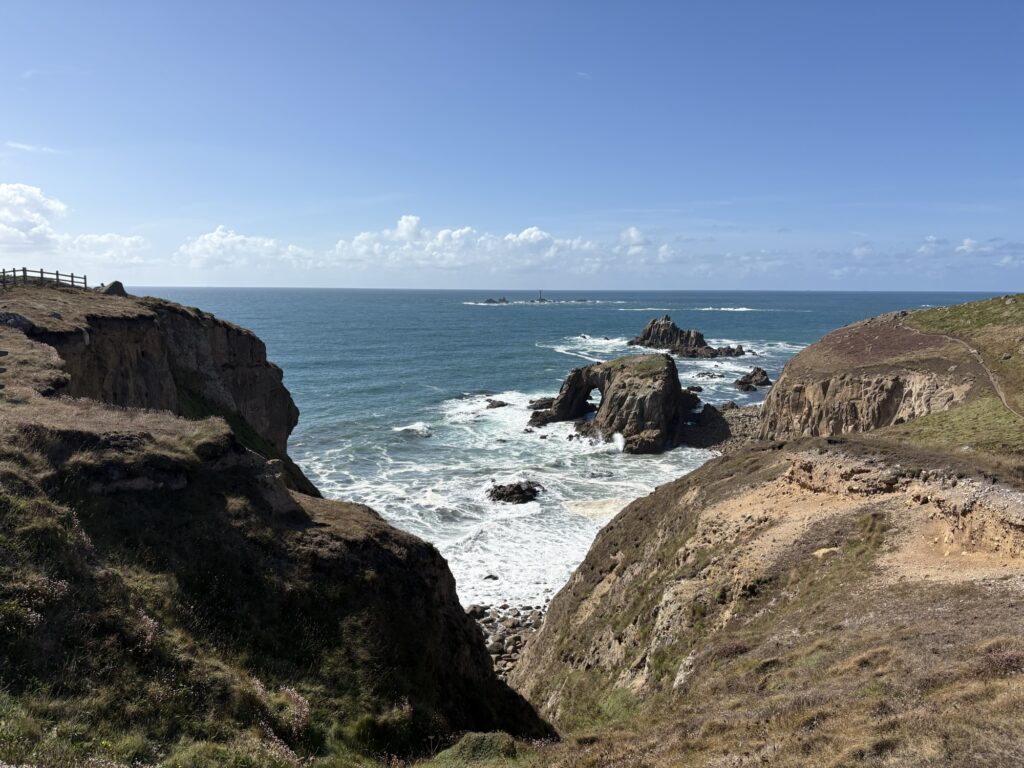
The coast keeps on giving, with magnificent granite cliffs, caves and stacks. The sea was in full tourist office regalia, blue-green under the sun contrasting bright white as it crashed on rocks and sand. The path was easy as this is such a popular tourist area and we quickly progressed to the lookout at Gwennap Head where we turned from south to east. We were now facing towards the Lizard, towards our final goals for this walk, and we could see the south coast of England. For the first time we could see coast that we would not be walking. Not this year anyway.
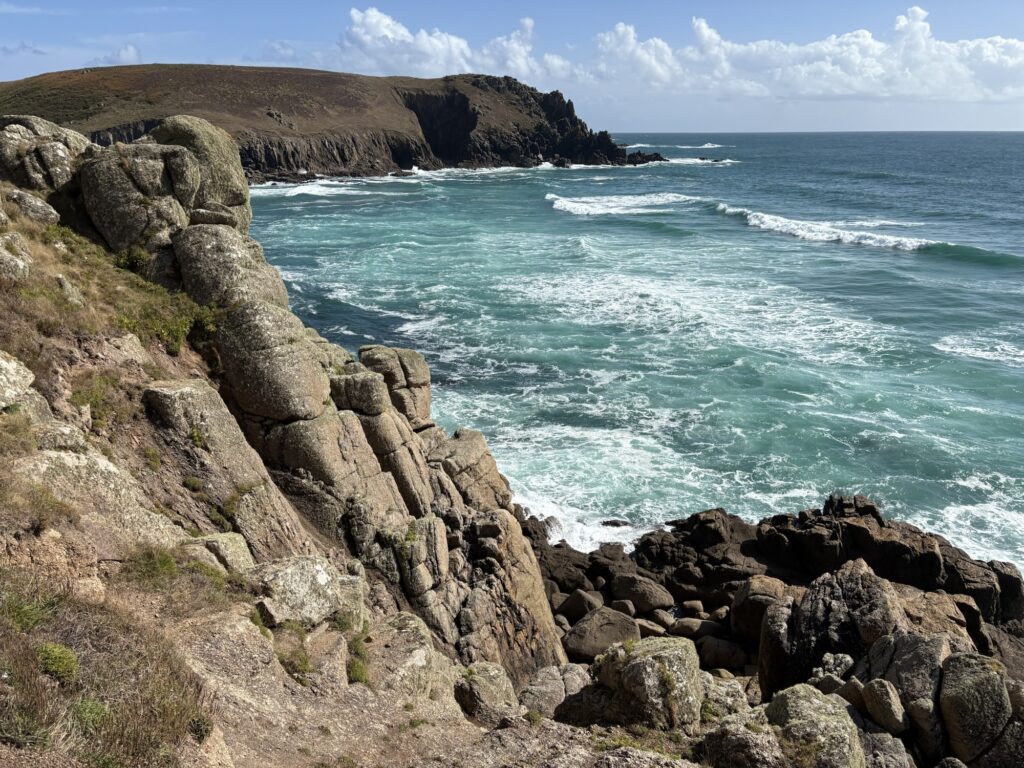
The campsite we had picked was another old and classic. These old campsites have great experience and tend to have the facilities you need figured out. They are also very used to and very welcoming of walkers of the coast path. We take up very little space, we arrive late and leave early. We are quiet and have no car. We are hungry and dirty and spend money easily on anything we can eat.
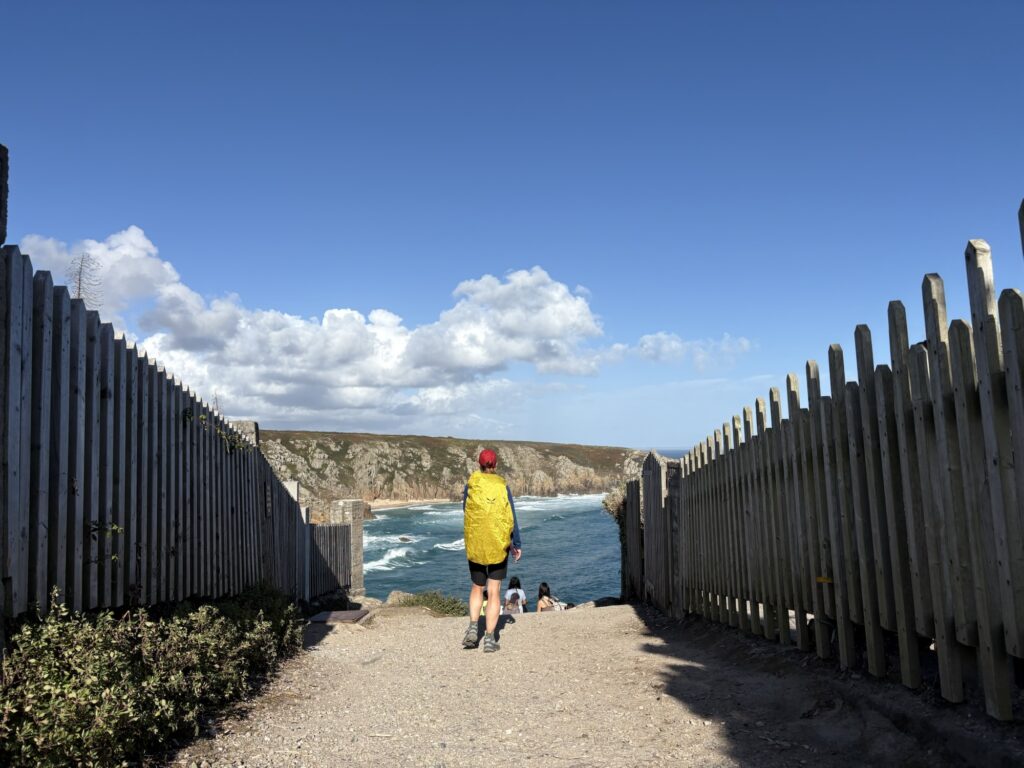
Today’s campsite was just after Porth Curno that famously has an open air theatre for plays and the like called the Minack Theatre. We couldn’t quite see it from the path. Porth Curno itself and its adjacent bays gave us another postcard finish to the day. The red flags were out (no swimming) and the orange windsock was blowing (don’t you dare get in the sea on an inflatable) but the beach was being enjoyed by families as it shrank with the tide. A steep climb took us to our beds for the night. That we would have to blow up and put in the tent after we had put the tent up.
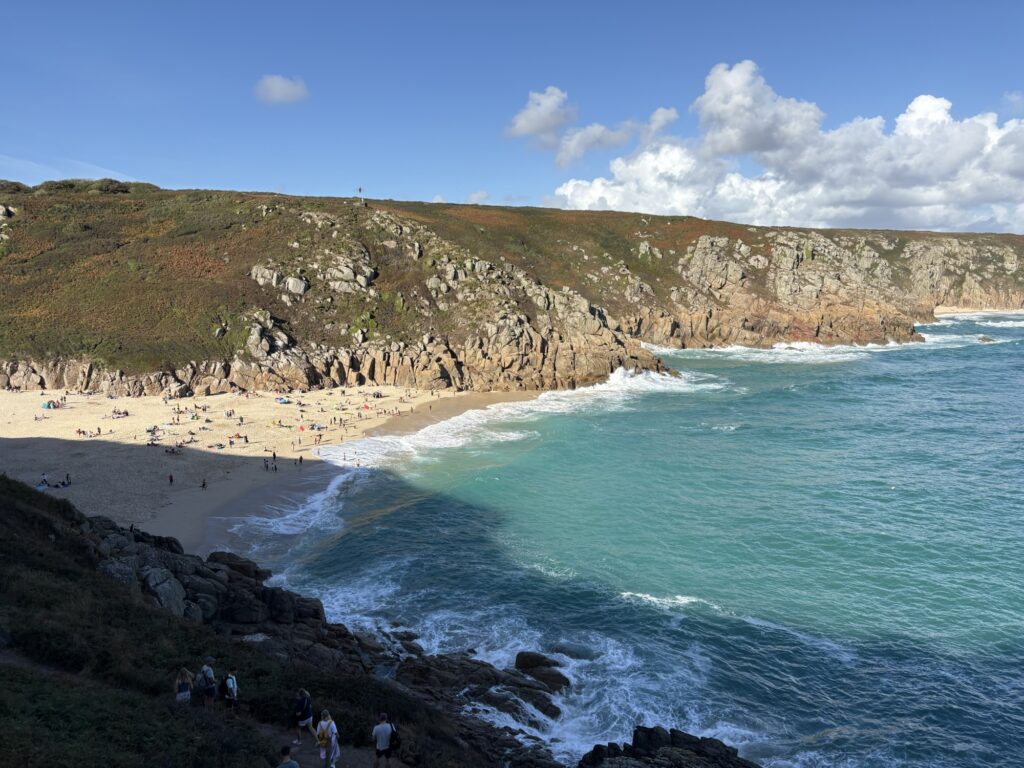
27.4km with 1033m of ascent.
